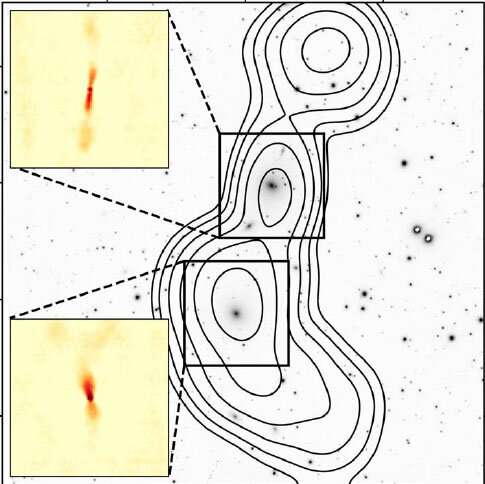VLASS: A survey of the radio sky

Technological advances in recent years have increased the sensitivity of radio interferometers like the Karl G. Jansky Very Large Array (VLA) to the radio emission from astronomical sources in their continuum (not only in their lines) by factors of several, enabling them to see fainter and more distant objects. Radio interferometers obtain high spatial resolution details of astronomical sources, and the new VLA, in addition to its sensitivity and high resolution, can provide information about the polarization of the emission, enable more reliable large-scale mosaic images, and with repeating observations monitor temporal variations. Not least, a series of recent sensitive sky surveys at optical and infrared wavelengths justify completing a corresponding radio survey. When combined, these multi-wavelength all-sky surveys will permit astronomers to characterize stellar and galaxy populations in unprecedented detail.
CfA astronomers Edo Berger, Atish Kamble, and Peter Williams are members of the VLASS (The Very Large Array Sky Survey) team, a large group working on a unique radio all-sky survey having all the aforementioned capabilities and able to cover all of the sky visible from the VLA location in New Mexico. VLASS science has four themes: finding otherwise hidden explosions and/or transient events, probing astrophysical magnetic fields, imaging galaxies both near and distant, and using radio wavelengths to peer through dust obscuration effects to study the Milky Way. Each theme contains numerous subtopics. Hidden explosions, for example, will probe the explosive death throes of massive stars including supernovae, their role in cosmological studies, gamma-ray bursts; signs of mergers between black holes and neutron stars will have implications for gravitational wave detections.
VLASS observations, begun in September 2017, are expected to be completed in 2024. In a new paper, the team reviews the VLASS goals and first-look results from early observations, showing how the data successfully demonstrate the ability of the project to achieve all its proposed goals. VLASS includes an integral education and outreach component with two workshops on data visualization held in the first year to train users to produce images that are aesthetic as well as scientifically accurate. The first preliminary data and materials are now available to scientists and the public.
More information: M. Lacy et al. The Karl G. Jansky Very Large Array Sky Survey (VLASS). Science Case and Survey Design, Publications of the Astronomical Society of the Pacific (2020). DOI: 10.1088/1538-3873/ab63eb
Provided by Harvard-Smithsonian Center for Astrophysics





















